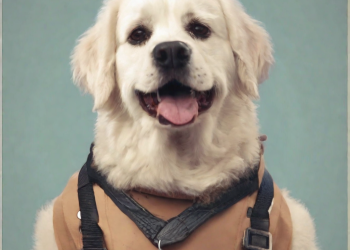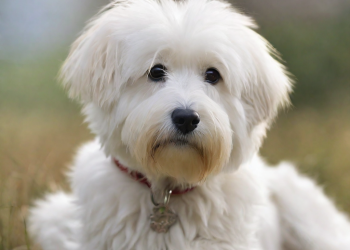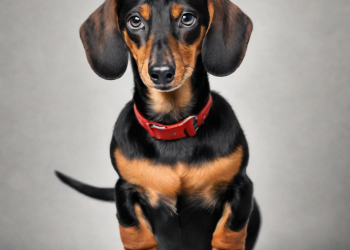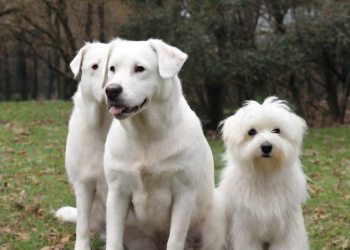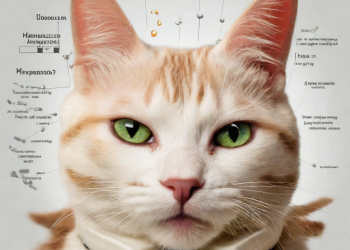Origin and history of the rastas water dog in Spain
The Rasta Water Dog has its origins in the Iberian Peninsula, with a significant influence from Spanish culture on its development as a breed. Its importance in Spanish society dates back centuries, being a loyal and versatile companion in various tasks.
Rastas Water Dog: A unique and fascinating breed
Discover why the dreadlocked water dog is one of the most interesting and versatile breeds that exist, with a history and characteristics that will surprise you.
Physical Characteristics of the Dreadlocked Water Dog
The Dreadlock Water Dog, known for its distinctive Rastafarian coat, is a unique breed with physical characteristics that make it stand out among other dog breeds. Below are the most notable physical characteristics of this breed:
Detailed description of the Rastafarian fur
- The dreadlocked water dog’s Rasta coat is one of its most striking features, with natural dreadlocks giving it a unique and distinctive appearance.
- Dreadlocks can vary in length and thickness, creating a casual and original look.
- Rastafarian fur requires special care to keep it clean and healthy.
Breed Standard Size and Weight
- The dreadlocked water dog has a medium size, with an average height of between 40 and 50 centimeters.
- The standard weight of the breed ranges between 15 and 22 kilograms, depending on the sex and build of the dog.
- These dimensions make it ideal to adapt to different environments and lifestyles.
Distinctive features of the appearance of the dreadlocked water dog
- In addition to its Rastafarian coat, the Rasta Water Dog is characterized by its alert and expressive look, as well as its triangular, upright ears.
- His muscular and agile body gives him an athletic and energetic appearance.
- Together, these physical characteristics make the Dreadlocked Water Dog a unique and attractive breed for those looking for a canine companion with a distinctive appearance.
Dreadlocks Water Dog Temperament and Behavior
The Dreadlocked Water Dog is known for its friendly and energetic personality, making it an ideal companion for families and active people. Some of his temperament characteristics include:
Typical personality of the breed
- Intelligent and obedient, which makes training and training easier.
- Affectionate and loyal towards his family, showing a strong emotional bond with his owners.
- Playful and energetic, enjoying interaction and play with loved ones.
Work and training skills
- The Dreadlocked Water Dog is known for its ability to perform various tasks, such as herding, hunting, and water rescue.
- He excels in dog sports such as agility, obedience and flyball, demonstrating his agility and dexterity.
- It requires constant mental and physical stimulation to stay happy and healthy.
Relationship with other animals and people
- He generally gets along well with other dogs and pets if properly socialized from an early age.
- He is friendly around strangers, making him a poor watchdog, but an excellent social companion.
- It shows affection and love towards children, making it an excellent choice as a family dog.
Care and needs of the dreadlocked water dog
The Dreadlocks Water Dog is a breed that requires specific care to maintain its health and well-being. Here are the most important aspects to take into account for proper care.
Exercise and physical activity requirements
The Dreadlocked Water Dog is an active breed that needs regular exercise to stay healthy and happy. Some recommendations include:
- Daily walks of at least 30-60 minutes
- Interactive games that stimulate your mind and body
- Participation in canine sports such as agility or flyball
Proper nutrition for the breed
The Dreadlocks Water Dog’s diet should be balanced and adapted to its specific needs. Some aspects to consider are:
- High-quality food appropriate for their life stage
- Portion control to avoid overweight
- Consult a veterinarian for specific recommendations
Coat Care and Grooming Needs
The Rastafarian coat of the Dreadlocked Water Dog requires special care to keep it in optimal condition. Some guidelines for its care include:
- Regular brushing to prevent knot formation and maintain hygiene
- Periodic baths with products suitable for their coat type
- Professional haircut if necessary to avoid excess hair
Health and common diseases in the dreadlocked water dog
The Dreadlocked Water Dog, like all breeds, can be prone to certain health problems. It is important to be aware of the most common diseases that affect this breed in order to provide proper care.
Most frequent health problems in the breed
- Hip dysplasia: This condition can cause lameness and pain in the Dreadlocked Water Dog’s hips.
- Progressive retinal atrophy: Some specimens of the breed can develop this eye disease that can lead to blindness.
- Skin problems: Due to its characteristic Rastafarian coat, the Rasta water dog can be prone to skin problems such as dermatitis and allergies.
Preventive care and visits to the vet
To keep your Rascal Water Dog healthy, it is important to make regular visits to the veterinarian and follow a preventative care plan, which may include vaccinations, deworming, and regular health checks.
Dreadlocked Water Dog Life Expectancy
Overall, the Dreadlocks Water Dog is a healthy breed that can live between 11 and 14 years if properly cared for and kept in a healthy, happy environment.
Dreadlocks Water Dog Training and Socialization
Training and socialization are fundamental aspects in the development of the Rasca Water Dog, ensuring that they are balanced and well-behaved dogs. Detailed here are effective training methods, the importance of early socialization, and recommended activities to stimulate the mind of this unique breed.
Effective training methods
The Dreadlocks Water Dog is known for its intelligence and willingness to learn, making it easy to train. It is recommended to use positive reinforcement methods, such as the use of rewards and praise, to encourage a desired behavior. Consistency and patience are key to achieving effective results when training this breed.
Importance of early socialization
Early socialization is crucial for the Rascal Water Dog as it helps them develop social skills and become comfortable in various situations. Exposing them to different environments, people and other animals from an early age will help them become confident and friendly dogs in their adult lives.
Recommended activities to stimulate the mind of the Dreadlocked Water Dog
Given its active and energetic nature, the Dreadlocked Water Dog requires mental stimulation to stay happy and healthy. It is recommended to provide them with activities that challenge their intelligence, such as fetch games, dog puzzles, and obedience training. These activities will not only keep them mentally sharp, but will also strengthen the bond between the dog and its owner.
Uses and skills of the dreadlocked water dog today
The Rastas water dog has performed various functions throughout history in Spain, and today it continues to be valued for its skills in different areas:
Traditional functions of the breed in Spain
- I work as a sheepdog, especially in rural areas
- Accompanying fishermen on the coast to recover nets and help with fishing
- Guard and protection of properties and flocks
Adaptation to new roles and jobs
- Participation in search and rescue activities, both on land and in water
- Service as a therapy dog in hospitals and rehabilitation centers
- Collaboration in drug and explosives detection tasks
Participation in dog sports and competitions
- Skill in agility and obedience tests, standing out for his intelligence and speed of learning
- Competition in work tests, demonstrating your endurance and ability to perform specific tasks
- Participation in dog shows and events, showing their versatility and unique abilities
Popularity and demand for the dreadlocked water dog in Spain
The popularity of the rastas water dog in Spain has been increasing in recent years, with growing interest in the breeding and adoption of this unique breed. The demand for these dogs has led to an increase in their presence in the media and social networks, which has contributed to their greater visibility in Spanish society.
Trends in breeding and adoption of the breed
Selective breeding of rasta water dogs has gained popularity among breeders in Spain, with a focus on preserving the physical characteristics and desirable temperament of the breed. At the same time, more people are choosing to adopt rasta water dogs from shelters and rescue organizations, demonstrating a growing interest in giving these animals a home.
Public Perception of the Dreadlocks Water Dog
The perception of the rastas water dog in Spanish society has evolved, from being considered primarily as a working dog to being appreciated as an affectionate and loyal pet. His reputation as a companion dog has contributed to his popularity among families and pet owners throughout Spain.
Presence in the media and social networks
Rasta water dogs have gained visibility in the media, appearing on television shows, magazines, and advertising campaigns. Additionally, this breed’s active presence on social media, with accounts dedicated to sharing photos and videos of dreadlocked water dogs, has contributed to its popularity and generating interest in the breed.
Myths and facts about the dreadlocked water dog
The dreadlocked water dog, despite its popularity, is surrounded by myths and misconceptions that are important to clarify.
Mistaken beliefs about race
- Some people believe that the Dreadlocked Water Dog is aggressive due to its imposing appearance, but it is actually a friendly and affectionate breed.
- There is a misconception that Rastafarian fur requires excessive and complicated grooming, when in reality it is quite manageable with proper care.
Clarification of misconceptions
- It is important to disprove the belief that the dreadlocked water dog is hypoallergenic, since no breed is completely hypoallergenic, although its coat may be more compatible with people with allergies.
- Another misconception is that the Dreadlocked Water Dog does not need exercise, when in fact they are an active breed that requires regular physical activity.
Truths about the dreadlocked water dog
- The Dreadlocks Water Dog is an intelligent and loyal breed, making them an excellent companion and working dog.
- Their Rastafarian coat is one of their most distinctive features, but caring for them is not as complicated as you might think, only requiring regular brushing and occasional trimming.
The dreadlocked water dog as part of Spanish culture
The dreadlocked water dog has been an integral part of Spanish culture for centuries, playing various roles and leaving an indelible mark on the country’s society and history. Its presence can be observed in different aspects of Spanish culture, from art and literature to festivals and cultural events.
Representation in art and literature
The dreadlocked water dog has been immortalized in numerous works of Spanish art and literature, serving as a symbol of loyalty, intelligence and companionship. His image has been captured in paintings, sculptures and poems, highlighting his importance in everyday life and popular culture.
Presence at festivals and cultural events
In Spain, the rastas water dog is a common presence at festivals and cultural events, where its role in society is paid tribute and its beauty and abilities are celebrated. These events include breed exhibitions, canine beauty contests and demonstrations of their working skills, highlighting their versatility and adaptability.
Historical and emotional link with Spanish identity
The dreadlocked water dog is not only part of Spanish culture in tangible terms, but also has an emotional and historical connection to the country’s identity. Their presence in the daily lives of Spaniards, their participation in traditional events and their role in society have contributed to forging a deep bond between race and Spanish identity.
In short, the rastas water dog is not only a companion or working animal, but it is also a symbol of Spanish culture, representing the history, tradition and spirit of the country.

